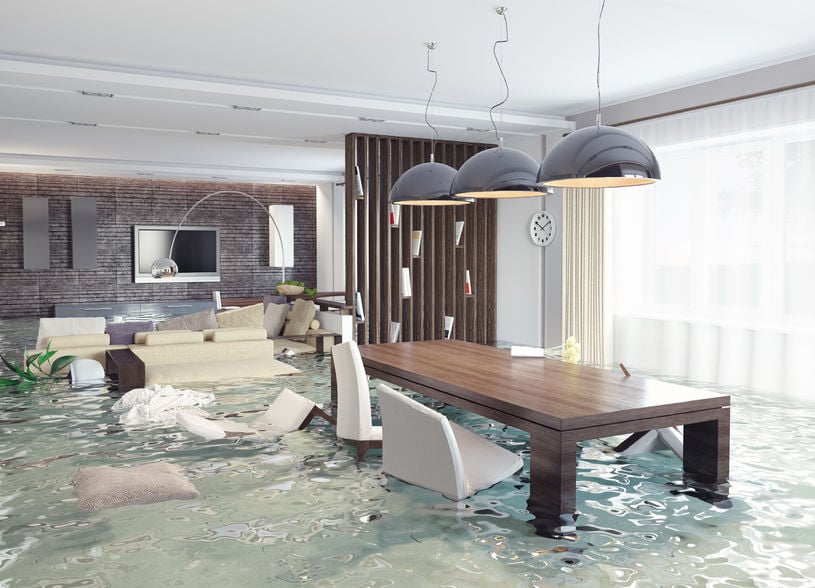
Water damage can appear quickly, but drying things off is only the beginning. Many people are surprised to learn how much can be missed during cleanup. What looks fine on the surface could be hiding bigger problems underneath.
We have seen situations where water damage looked minor at first, but turned into major repair work later. Cleaning up quickly is good, but stopping long-term damage means catching the steps that most people forget. If your home or building in Los Angeles or nearby has been affected by water, it is helpful to know what to look for, and what should not be skipped during water damage restoration.
Missed Moisture Behind Walls and Floors
One of the biggest mistakes is not checking for leftover moisture in spots that are out of sight. It is easy to focus on what is wet in the open, like carpets or floors, but problems like soaked drywall or the framing underneath can go unnoticed, especially if you are not sure where the water traveled.
- Water can pool under baseboards, sneak behind cabinets, or run underneath floorboards
- Even a small leak can spread quite a bit if it is not found quickly
- These hidden areas stay wet much longer and can lead to mold, musty smells, or soft spots later
If those spaces are not inspected and handled early, they can turn into health or safety issues in the weeks and months to come. What looks dry might still be wet underneath. Restoration Masters uses advanced moisture detection equipment, like thermal imaging and hygrometers, to spot hidden pockets of water in places you cannot see or reach on your own.
Overlooking Air Circulation and Dehumidifying
Another thing people often skip is drying the air. It may sound strange, but after a water event, the air inside holds on to a lot of moisture. Even if your floors feel dry to the touch, that damp air slows down the full drying process.
Fans help, but they are not always enough on their own. What really clears moisture out of the room is moving the air and pulling the humidity out with the right equipment.
- Closed-up rooms in fall can trap indoor moisture and cause it to settle in walls and wood
- Dehumidifiers help speed up drying by removing lingering water from the air
- Without proper airflow and ventilation, moisture can stay behind even if you do not feel it
This is especially important during cooler, slightly wetter seasons like late October in places like Riverside County and Ventura, where homes may be sealed up tighter. Restoration Masters’ water damage restoration process includes setting up professional air movers and industrial-grade dehumidifiers to accelerate drying and prevent mold growth.
Skipping Damaged Material Removal
Sometimes damage is bigger than it looks. A wet carpet might feel okay after drying, but the padding underneath could stay soaked. The same goes for drywall or insulation. If materials like these soak up too much water, drying them in place is not always a safe option.
- Water-damaged materials can trap odors and harmful bacteria
- Mold often grows beneath materials that were never fully dried or were left in place
- It is better to safely remove and replace damaged sections than let the problem linger
We understand that throwing things out might not feel necessary at first, but leaving wet materials behind is a common reason why smells and damage return weeks later.
Ignoring Small Signs after Cleanup
Just because cleanup looks complete does not always mean the problem is over. Sometimes it takes a little while for hidden damage to show up. That soft spot in the wall or faint musty smell near the baseboard might not have been there right away, but now it is hard to ignore.
- Peeling paint, warping floors, or strange odors can take days or weeks to appear
- These are warning signs that moisture might still be hiding somewhere
- Double-checking the area a few days after cleanup can catch those problems while they are still small
The key is staying alert once cleanup is finished. If something feels off, it probably is.
Missing the Root Cause of the Leak
Cleaning up the water is important, but it is just as important to figure out exactly where that water came from in the first place. Fixing the area without fixing the source often leads to repeat problems.
- Pipes, rooflines, or appliances can leak slowly and repeatedly
- If the cause is not found and repaired, moisture may keep seeping into the same area
- Looking for signs that a leak is recurring can help avoid another round of water damage
Whether it came from a broken pipe or a drip under the sink, it is always worth checking that the water will not return once the cleanup is over.
Stay Ahead of Water Damage in Southern California
Water damage restoration is not just about drying things out. It is about knowing where to look and what steps not to skip. Missed moisture, soaked materials, or hidden leaks can turn into bigger issues if they are not handled right away.
By catching these small details early and giving extra care to places you cannot see easily, you can stop mold, warping, and serious structural damage before they begin. Fall is a good time to check for signs of past water issues, especially as cooler air, rain, and closed-up spaces become more common across homes in Southern California.
Restoration Masters responds 24/7 to water emergencies in Los Angeles, Orange, Riverside, and Ventura counties, with experienced professionals trained to identify all stages of water damage. Our team goes beyond visible cleanup to make sure every source and sign of trouble is addressed, not just covered up.
Persistent moisture, odd odors, or recurring damage can signal hidden water issues that need expert attention. Small leaks often become bigger problems if left untreated, so let our Restoration Masters team help you safeguard your property. For homes and businesses throughout Southern California, we provide dependable water damage restoration backed by years of experience. Reach out today and get the help you deserve.





